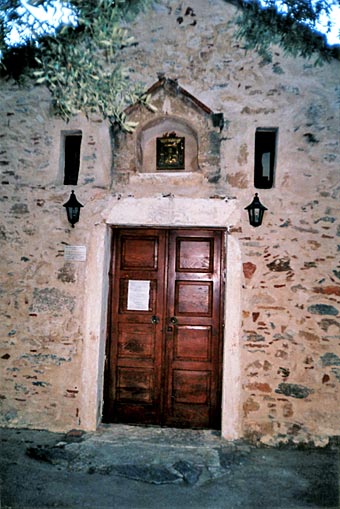Type: Aisleless, Barrel-Vaulted Basilica
Date: Phase dated to the 12th century
Description:
In Kantza Pallini and in the east of Lavriou avenue lies the post Byzantine church of Hagios Nikolaos. It is a small, barrel-vaulted, single-naved church with a phase dated to the 12th century based on excavation findings. This phase was also evident externally, since remnants of the masonry must have belonged to the semicircular apse of the old Byzantine church. The remnants of this apse used to be visible but they were recently covered with cement. Excavations in the summer of 1984 have revealed – besides the foundations of this old church – remnants of a cemetery in its southern side, as well as remnants of a 12th century building. The arrangement of the buildings has the features of a monastic complex (established in the middle of the 6th century). Rooms surround an internal courtyard in the midst of which lies the central church. Among the findings there are ceramic utensils, pots with colorful decoration, fragments of wall paintings and a fragment of an ancient marble lecythus (type of burial pot). Characteristic is the marble (Pentelis marble) gigantic lion nowadays displayed in an outdoor roofed area in the northwest of the church. It is a statue dated to the end of the 4th century B.C., which has been associated with local legends and is mentioned by posterior travelers. It was probably part of a big burial monument of a significant person, according to archaeologist Ursula Knigge. Noteworthy is also the marble sarcophagus dated to the 4th century B.C., which was revealed in 1981. According to written sources, the church of Hagios Nikolaos (the more recent church) was built in 1592 and was repaired in 1872 by I. Theophilatos, who bought it in a ruinous state. It used to be the metochion of the neighboring Monastery of Hagios Ioannis Kynigos of the Philosophers. Consequently, new excavations in the area will lead to even more specific scientific deductions.
Knigge Ursula, Zum Loven von Kantzas, A.M. 91(1976), p. 167 ff.











